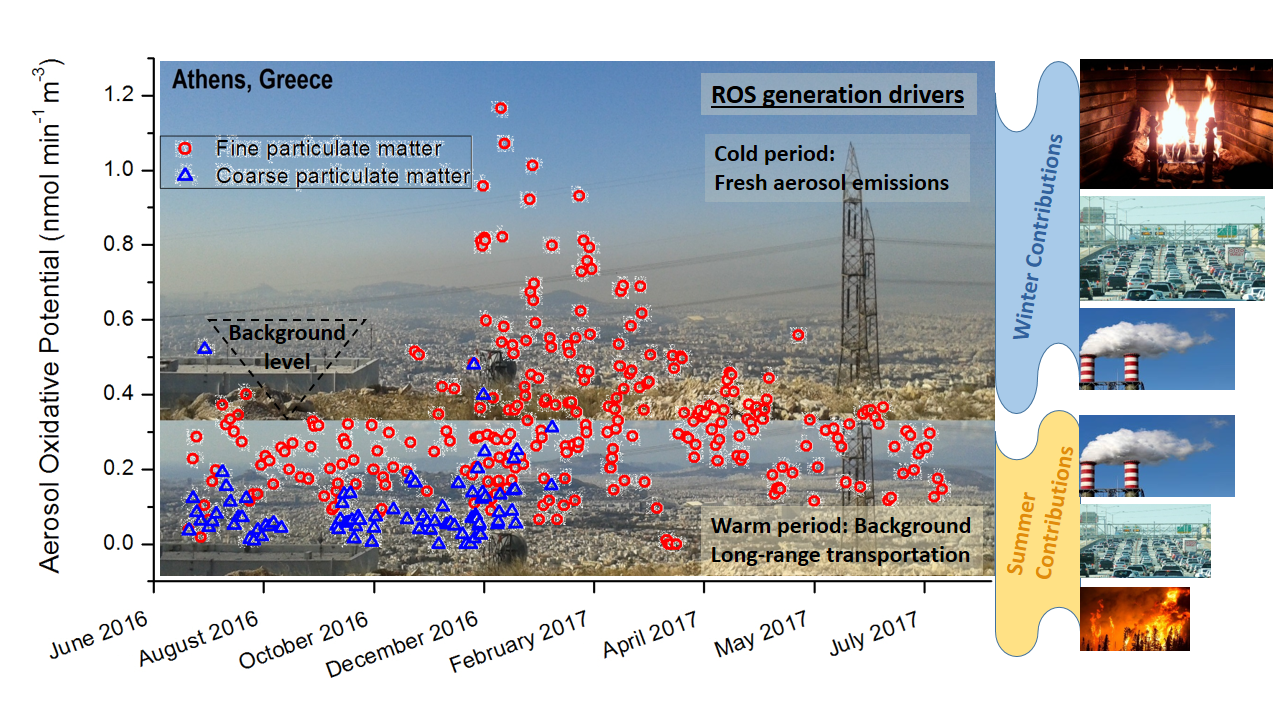Air pollution is a leading environmental cause of disease and premature mortality worldwide, particularly in urban areas where the majority of the global population lives. Much work is still needed to further our understanding on the pathways of exposure and the impact of different air pollution sources and processes on human health; especially for pollutant categories where research on health effects is limited, such as ultrafine aerosols and fine aerosol components. Our main goals are to generate accurate exposure data for use in health studies and to investigate causal links between exposure and effects, elucidating biologically plausible mechanisms that follow inhalation exposure.

Source: Paraskevopoulou et al., 2019
Our activities include:
- Research on applications for the assessment of ambient and personal exposure to air pollutants, including the evaluation of the performance of novel instruments, suitable for use in personal measurements and on mobile platforms.
- Implementation of geospatial analysis and modelling techniques utilizing GIS data, for spatial prediction and mapping of ambient concentrations and exposure.
- Emphasis on hazardous pollutants and aerosol constituents of high toxicity and carcinogenic potential, assessing their associated risks with specific indicators.
- Field and laboratory research on bioaerosols – including outdoor sampling followed by molecular analysis and sequencing of extracted DNA – in view of their potential health impacts (i.e. allergic and toxic responses, spread of infectious diseases).
- Implementation of thermodynamic models to estimate the aerosol acidity which can significantly impact the solubility of hazardous components in airway fluids, promoting redox reactions and particle translocation.
- Investigation of the generation of Reactive Oxygen Species (ROS) - by fine particulate matter - which can be either transported on particles or generated by particles through redox reactions, and are considered a primary mechanism in the initiation of injurious cellular responses.
- Application of experimental and simulation methods of bioengineering, aiming to investigate the impact of air pollution on biological tissues.

